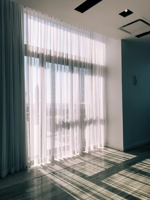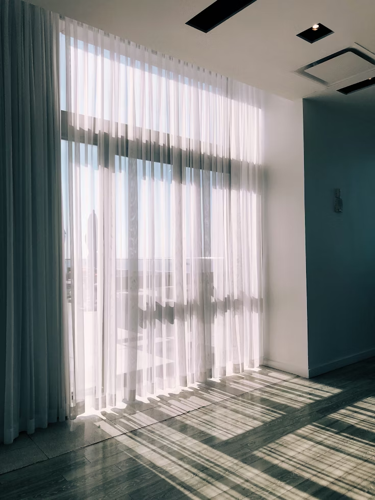A healing environment shapes the experience of those who spend time in it. Whether it is a hospital, clinic, or rehabilitation center, the design and atmosphere of the space influence comfort, mood, and recovery. Light, sound, colors, textures, and even the way privacy is managed all play a role in how patients, families, and healthcare workers perceive their surroundings. Creating such an environment requires thoughtful choices that balance functionality with calmness, aiming to support the physical and emotional well-being of everyone who enters.

The Role of Curtains in Patient Comfort
Privacy is a major part of feeling secure in any care setting. Curtains separate spaces, reduce distractions, and provide a sense of personal boundary. Their colors and textures can also soften what might otherwise feel like a cold or sterile environment. A well-chosen fabric can create warmth, reduce glare, and support a more restful atmosphere. Working with professionals such as the Cubicle Curtain Factory gives hospitals and clinics access to durable, attractive options that combine practicality with design. Beyond separation, curtains contribute to infection control when made with antimicrobial fabrics, which adds another layer of protection for patients and staff.
Lighting That Promotes Calmness
The quality and placement of lighting in a healthcare setting have a significant impact on how patients feel and recover. Harsh, bright lights can create tension, fatigue, and irritability, particularly for individuals who are already stressed or experiencing pain. Spaces that allow natural light to enter provide a soothing atmosphere and help regulate circadian rhythms, which are essential for restful sleep and overall wellness. For areas where sunlight is limited, warm-toned artificial lighting can mimic the gentle glow of daylight, softening the room and creating a sense of comfort. Adjustable lighting systems give patients and staff control over brightness levels, allowing them to create an environment suited to their needs at any moment. Task-specific lighting near examination areas or reading spaces ensures safety and functionality without compromising calmness in the surrounding areas.
The Importance of Sound Management
Sound is often overlooked when designing healthcare spaces. Noise from equipment, alarms, and foot traffic can increase stress and make rest more difficult. Acoustic panels, quiet flooring materials, and sound-absorbing furniture help reduce unwanted noise. Music therapy or calming background sounds may also provide comfort, lowering anxiety and promoting a sense of tranquility. Attention to sound design not only supports patient well-being but also helps staff concentrate better, which improves the quality of care.
Colors That Support Healing

Colors have a powerful effect on human emotions and physical responses, making them a crucial element in healthcare design. In patient rooms, soft blues, gentle greens, and muted lavenders are often preferred because these hues are associated with calmness, relaxation, and rest. Such tones can help lower blood pressure, reduce anxiety, and create an environment that feels soothing rather than clinical. Warmer tones like soft yellows, peaches, and light oranges are sometimes introduced in communal spaces to encourage social interaction and a sense of energy without being overwhelming. These colors can make waiting areas or rehabilitation spaces feel welcoming and less intimidating for patients and visitors alike. Neutral shades such as soft grays, taupes, and creams work well in corridors, consultation rooms, and treatment areas because they balance brighter accents, create visual consistency, and provide a calming backdrop for both patients and staff. Textured wall finishes or subtle patterns in these colors can add depth and interest, preventing the space from feeling flat or monotonous. Designers often take care to avoid overly bright or saturated colors that may induce stress or fatigue, opting instead for palettes that reflect natural light and contribute to a sense of tranquility. Considering color in combination with lighting is also critical, as natural or warm artificial light can change the perception of shades throughout the day, influencing mood and comfort.
The Role of Nature in Recovery
Connection to nature has a measurable effect on both mental and physical well-being, making it a key consideration in healthcare design. Access to green spaces, whether through large windows overlooking gardens, courtyards, or even rooftop terraces, can help reduce stress, lower blood pressure, and improve overall mood. For patients who are confined to their rooms, indoor plants offer a tangible link to the natural world, softening sterile environments and making spaces feel more inviting. Incorporating elements such as small trees, potted plants, or even vertical gardens can create a micro-ecosystem that provides visual relief and a calming focal point. The use of natural materials like wood, stone, or water features within common areas or hallways further strengthens this connection, making the facility a more restorative experience. Additionally, exposure to natural light combined with greenery has been shown to improve circadian rhythms, which supports better sleep patterns and aids in recovery. Artworks depicting landscapes, floral scenes, or oceanscapes can complement these physical elements, giving patients who are unable to access outdoor areas the psychological benefits of nature. Thoughtful placement of plants and natural accents can also improve air quality, which contributes to a healthier environment for patients and staff alike.
Designing for Family and Community
Healing does not take place in isolation, and the presence of family, friends, and loved ones can significantly impact recovery. Spaces designed for families allow visitors to be present without adding stress to patients, offering areas where they can rest, eat, or simply spend quiet time together. Comfortable seating, private consultation rooms, and family lounges create an environment that supports connection while maintaining a sense of privacy. In addition, communal areas that encourage social interaction among patients and visitors can help reduce feelings of loneliness and provide emotional support. Thoughtful design can also incorporate small touches such as accessible charging stations, reading materials, or play areas for children, making visits more convenient and less disruptive. By considering the needs of both patients and their support networks, healthcare environments can cultivate a sense of belonging, reassurance, and shared strength, all of which contribute positively to the healing process.
A high-quality healing environment blends functionality with comfort, aiming to support both the physical and emotional needs of patients. Curtains that provide privacy, lighting that creates a calm atmosphere, careful sound management, thoughtful use of colors, natural elements, and welcoming spaces for families all come together to shape the experience. Every detail influences recovery, mood, and well-being, creating a space where healing feels supported on multiple levels.





(0) comments
We welcome your comments
Log In
Post a comment as Guest
Keep it Clean. Please avoid obscene, vulgar, lewd, racist or sexually-oriented language.
PLEASE TURN OFF YOUR CAPS LOCK.
Don't Threaten. Threats of harming another person will not be tolerated.
Be Truthful. Don't knowingly lie about anyone or anything.
Be Nice. No racism, sexism or any sort of -ism that is degrading to another person.
Be Proactive. Use the 'Report' link on each comment to let us know of abusive posts.
Share with Us. We'd love to hear eyewitness accounts, the history behind an article.